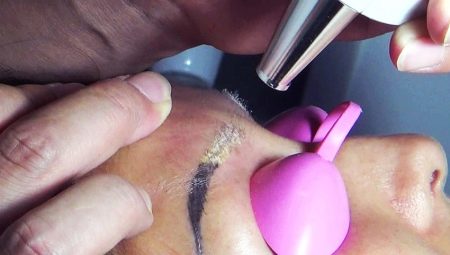Permanent makeup is now gaining popularity. For example, eyebrow tattooing allows you to always look bright and not depend on makeup. Girls who want to make their eyebrows visually thicker and darker often resort to this procedure. However, sometimes the result does not live up to expectations and the removal of pigment, which is usually carried out using a laser, is required. If you are thinking about getting rid of tattooing, it is worth considering all the nuances of this procedure.
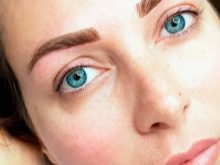

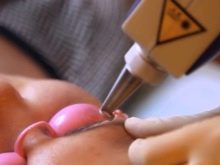
Features
In the process of tattooing, a finely dispersed pigment is introduced under the skin, thanks to which the eyebrows get a bright color and a clear outline. Depending on various factors, such a pigment can last from 1 year to 10 years. However, there are ways to remove the tattoo artificially. This procedure can be carried out with a neodymium laser or a remover.
The first method involves irradiation of skin areas on which the tattoo was performeddue to which the paint in the deep layers of the skin is split and excreted. Sometimes this is done even at home, because the procedure consists of ordinary injections, but it is better to entrust your beauty to specialists. The second method involves a chemical effect, and the procedure resembles the application of pigment, but this time a special substance is introduced under the skin that helps to get rid of the dye. Chemical removal is an inexpensive and effective service, but the healing process can take up to six months, and unscrupulous work of a specialist can lead to serious complications.
Most often, laser removal of permanent makeup from eyebrows is now practiced.


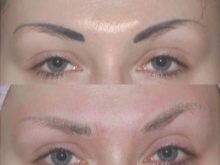
A laser beam without direct contact with soft tissues destroys the capsules of pimento under the skin, and then it is completely eliminated by the lymphatic system of the body in just a few weeks.
The use of a laser has the following characteristic features:
- To remove eyebrow tattoos, 3-4 sessions are usually required, unlike chemical removal, for which it is enough to introduce a remover once. The break between sessions is usually a few weeks.
- The cost of laser removal is relatively high.
- The laser does not output warm colors. It affects only cold tones: capsules of blue, green, purple, black and gray shades are split. Yellow, red and orange pigments, in contrast, can darken under the influence of laser beams. You need to consult a specialist to decide if it is possible to remove pigments with your spectrum in this way.
- A few weeks after the complete removal of the pigment from the layers of the skin, you can apply a new permanent makeup - this may be required for those who did the first procedure unsuccessfully and want to adjust the tattoo.
- Despite the fact that you need to visit the clinic several times to completely remove the pigment, you will notice the first results after one session - the pigment will become much lighter.


- The procedure lasts only 5-15 minutes.
- Using a laser, unlike a remover, is impossible at home - this is a high-tech procedure that requires the mandatory participation of a specialist.
- Immediately after exposure to the laser, swelling, slight bruising, and the appearance of a thin crust covering the eyebrows are possible. It is strictly forbidden to interfere with the healing process - wait until the crust disappears by itself, otherwise there is a risk of infection and prevent the restoration of the skin, which threatens the formation of scars on the eyebrows.
- After removing the tattoo, the hairs on the eyebrows lighten, but this is a temporary effect. For some time, you can tint eyebrows with ordinary pencils and mascara - this will not do harm.
- Exposure to the laser stimulates hair growth, so you don’t have to worry about the safety of your natural eyebrows.
- The clinics claim that the procedure is painless, but many customers find the laser exposure extremely unpleasant. However, introducing a remover under the skin is considered more painful.
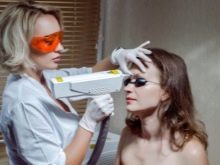
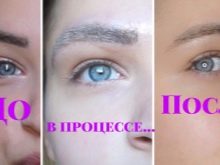
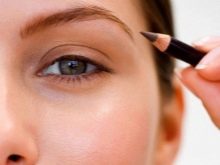
Indications and contraindications
Any medical intervention, even cosmetic, does not pass without a trace to the body. Before deciding on laser removal, read the list of contraindications to the procedure and, if necessary, consult with a specialist in advance.

Laser permanent makeup removal is not recommended in the following cases:
- Inflammatory processes and various skin diseases, such as psoriasis, eczema and fungal infections, are the first and most important contraindication to the procedure - the laser will unpredictably affect the course of the disease and can aggravate unpleasant symptoms.
- During pregnancy, any unnecessary medical intervention is undesirable, especially as serious as laser exposure. It is also better to postpone removal during breastfeeding.
- The presence of scars on the skin is also a contraindication to the procedure.
- Clinics usually do not undergo laser removal for persons under the age of majority.
- A fresh tan is undesirable before using a laser: if you are very tan in the sun or in a solarium, you should wait at least a week, and only then plan the procedure in the clinic.



- Serious heart problems can be a contraindication - depending on the current state of your health, doctors decide whether or not laser removal is possible.
- Skin neoplasms, such as moles, papillomas and warts, should never be treated with laser beams - this can lead to serious complications.
- Disruptions in the endocrine system can also cause the inability to remove permanent makeup with a laser.
- If you are allergic to sunlight, you should also refuse this method of removal.
- With epilepsy, the procedure is not carried out.
- Colds and flu can also be a contraindication due to a general decrease in immunity.
- Clotting problems make the procedure undesirable.



Aesthetics defects of a tattoo are most often indicated for the use of a laser for removal: permanent makeup seemed too bright and unnatural for you, an unsuccessful shape of the eyebrow bending and thickness were chosen, or the master made a mistake when working. It is extremely rare that complications after the introduction of pigments and associated health problems can be an indication for removal - in each case, the doctor offers the client an individual solution. If you are considering whether to carry out chemical or laser removal, it is worth considering that the indications for these two methods are absolutely similar.
Laser removal imposes even more restrictions than using a remover, because it is hypoallergenic and is not associated with thermal exposure. However, the duration of the procedure, the long recovery period, pain and discomfort make clients in clinics often resort to laser removal.
The main thing is to take into account all contraindications and consult with a good specialist.
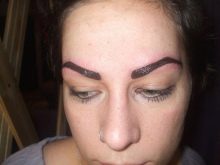
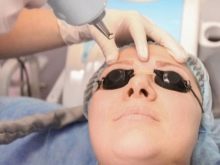
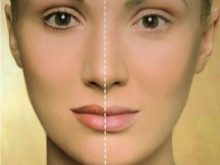
Preparation for the procedure
The key to successful tattoo removal and quick comfortable skin repair is the right preparation for the session. Specific recommendations, depending on your health status and skin characteristics, must first be obtained from your doctor.
At the same time, a number of common points should be taken into account:
- If possible, in the last days before the planned procedure, it is recommended to exclude or minimize the ingress of ultraviolet radiation on the skin. When removing the tattoo on the eyebrows, this can be problematic, but you can try wearing massive sunglasses or hats with a visor. It’s definitely not worth tanning before the procedure. Exposure to ultraviolet light will make the skin drier, and therefore more sensitive to the laser - this will affect the pain of the procedure, as well as the condition of the skin after it and the duration of healing of the eyebrows.
- If you are taking medications that affect the skin condition, it is better to temporarily abandon their use. It is better to discuss with your doctor in advance not only the state of your health, but also those pills that you take regularly - it may be better not to take certain substances before the procedure.
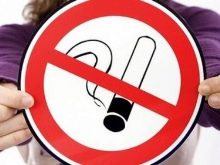


- If you smoke, doctors strongly recommend lowering the dose of nicotine consumed before the procedure.
- Make sure that there are no small wounds or lesions on the skin. In particular, plucking eyebrows a couple of days before the planned removal of permanent makeup should also not be.
Before proceeding with laser removal, the doctor must treat the skin with an antiseptic or a special disinfectant solution. Special dark glasses that protect against rays are put on the patient’s eyes. Laser tuning is carried out individually for each client, depending on the characteristics of the skin, the depth of the pigment and its shade.
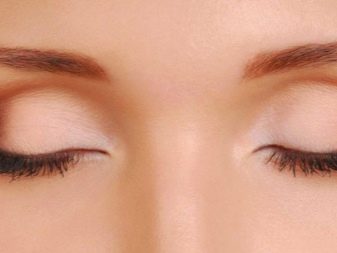
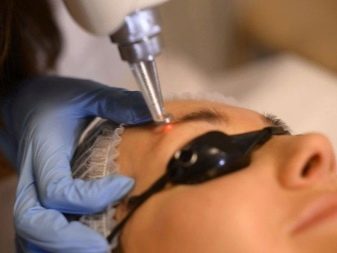
How to delete?
Since it is not always possible to determine the pigment depth and skin sensitivity from the side accurately, the first pigment excretion session is a test. Usually it does not last long, and after it you need to evaluate the results: healing should occur within a week, and the color of the tattoo should become noticeably lighter. In case of a positive effect, the doctor will use the same settings for the laser system in all sessions, and if you have any complaints, the settings will be adjusted.
To remove the old dye from the skin, the doctor directs the laser beam to the area of the skin with permanent makeup. By slightly shifting the mounting holder and moving the beam, the specialist sequentially processes the entire area of the eyebrows with a laser, which allows the color to be reduced in future. With long time intervals, several sessions are planned to completely remove the unwanted shade.
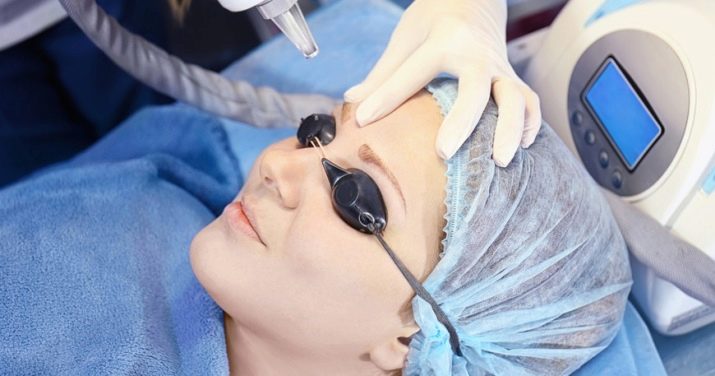
It is quite comfortable to remove the pigment with a laser, although the sensations from the procedure are subjective, individual and sometimes unpredictable. For some patients, mild tingling and burning sensations do not cause problems, while others associate this with severe pain. One way or another, laser removal is considered more gentle compared to the introduction of a chemical remover under the skin. After exposure to the laser, a cooling gel is applied to the eyebrows, which allows you to remove unpleasant sensations.
Further, for a successful result, it is only important to carefully care for the eyebrows and follow all the doctor's recommendations.
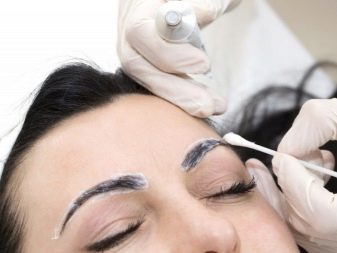

Care
Immediately after a short procedure, you can leave the clinic, because eyebrow care after laser removal of permanent makeup occurs at home. The main recommendation that doctors give is not to interfere with the natural healing process of the skin. You do not need to touch the eyebrows after the procedure: they may appear swelling, bruises, wounds and a crust, but all these are completely normal consequences of exposure to laser beams.
If you try to remove the crust from the eyebrow yourself, without waiting for it to come off by itself, the formation of scars is very likely, which will not be easy to get rid of.

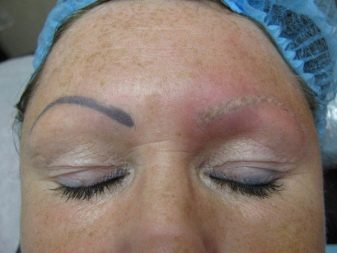
Additionally, the following recommendations should be considered:
- If the swelling did not go away on the first day after removal, it can be removed with the help of drugs. For example, ordinary Suprastin or Tavegil usually cope with this.
- Painkillers can also be useful in the first days after the procedure - you can take any pills you are used to: Nimesil, Nurofen, Ketorol and others.
- The crust in the first days can not only be peeled off, but also wet. Be careful when washing and taking a shower.
- The doctor may recommend a special cream for the treatment of damaged areas, but it should be used in accordance with the recommendations.
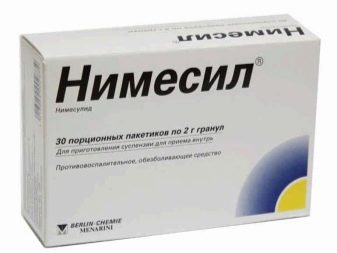
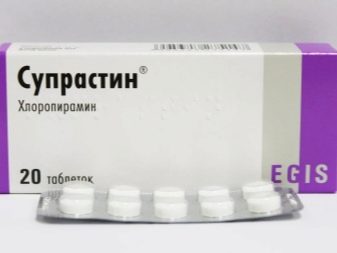
- In the next week after the procedure, you will have to refuse to visit the bath, sauna and pool - excessive humidity and high temperature can slow down the healing process of wounds after the laser.
- Within a month after removal, you must refuse to visit the solarium and not abuse the tan in the sun: the skin after exposure is very sensitive.
- In the healing process, in no case should you use peeling on laser-treated areas, and you do not need to use lightening agents.
- If the pain and swelling do not subside for several days, if the crust does not come off for a long time or you accidentally damaged it, you should contact your doctor for further recommendations.
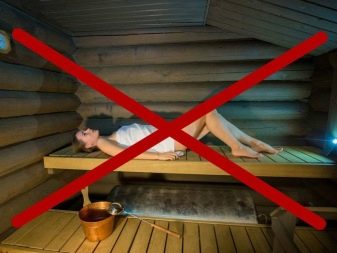
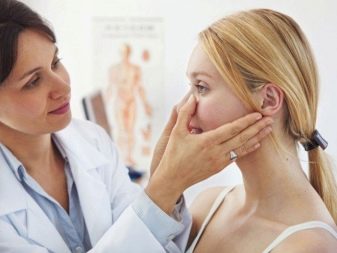
Despite the fact that the consequences of the procedure are quite tangible and many rules must be followed, usually the process of eyebrow care after removal does not cause discomfort. The process of crust formation and its descent is especially important. After that, you can even fully use the usual makeup - apply foundation, summarize eyebrows with pencil and mascara. The main thing is to thoroughly wash off all cosmetics, do not forget about moisturizers.
Between the procedures, proper everyday skin care is very important to ensure that it is healthy: an unnecessary traumatic effect of the laser can cause peeling or acne in the absence of care, and you can re-conduct the session only on healthy areas of the skin.

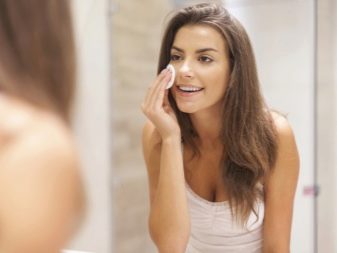
Reviews
Some clients remain completely satisfied with the procedure, while others complain of serious discomfort or an aesthetically poor result.In many respects, the results of the removal will depend on the characteristics of your skin and individual sensitivity, and the clinic and the qualification of the attending physician play a huge role. In no case do not try to save money on this procedure if you need your own beauty.
There are not many ways to remove unwanted permanent makeup, so many decide to remove it with a laser, even without reading the reviews about the procedure. However, it is better to take into account the opinion of those who have tried this method of getting rid of tattooing, and only then make their decision.
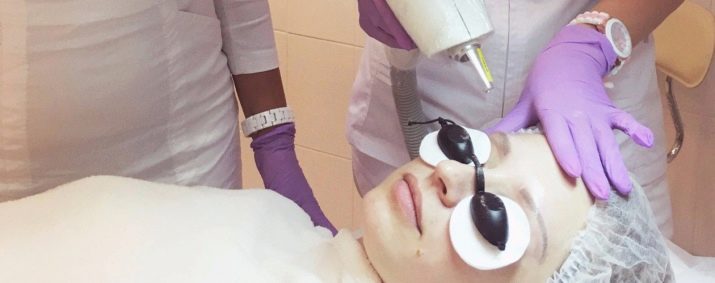
Most women are pretty laser removed.
Those customers who leave negative reviews, note the following points:
- Unpleasant sensations during the procedure repel many. Despite the fact that in clinics this procedure is presented as painless, in fact there is a sensation of tingling and burning sensation, which is perceived by each woman subjectively. Anesthesia during laser removal is not done - the introduction of the drug distorts the tension of the skin and makes it impossible to carry out such a rigorous operation. The owners of a low pain threshold should be feared: try to come to the procedure with a good emotional mood and consult a doctor about taking painkillers.
- The high cost of laser removal is another unpleasant moment that repels many. Nevertheless, chemical removal is slightly cheaper, and there are no economical ways to get rid of tattooing. The specific price of the procedure varies in different clinics, however, it is not worth choosing who to contact based on the low price. You may encounter poor-quality service, and laser irradiation is a serious enough intervention, so you risk your own beauty and health. It is better to choose a proven clinic with a long history of work, a large client base and good recommendations.
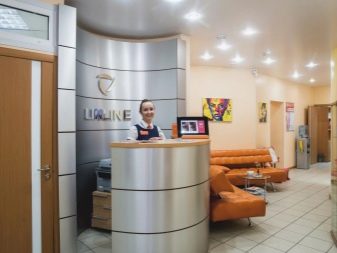
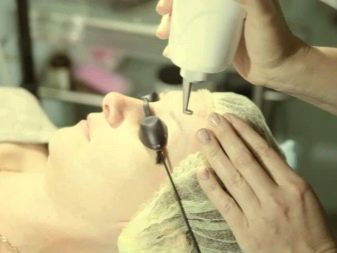
- Some clients complain of an unaesthetic appearance after the procedure. Indeed, bruises, swelling and a crust covering the eyebrows are inevitable consequences, and you will encounter them more than once if you plan to completely remove the pigment in several sessions. You need to plan your schedule in advance - if you are waiting for important public appearances, they must pass 4-5 days after the laser has removed the color: then the crust will fall off and you can use makeup.
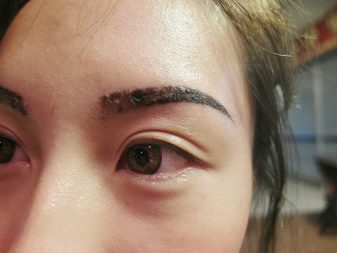

In the positive reviews of the procedure, note the following:
- The laser removes pigment quickly and efficiently. After the first session, your eyebrows will look much brighter. If we compare this with chemical removal, the rate of removal of permanent makeup with a laser cannot be compared with a remover: the substance introduced under the skin gradually splits the dye capsules over several weeks. The laser gives an instant effect, so it is used even in the most critical situations - for example, in the case of low-quality tattooing, when you quickly need to bring your appearance back to normal.
- The recovery period after laser intervention is relatively short - after a few days, there will be no appearance defects, and health will be good. The pain, swelling and sores on the eyebrows go away a maximum within a week. In this case, the recovery period after using the remover can stretch for several months and requires periodic monitoring by a doctor. Skin care after laser exposure is minimal, and after a month you can completely forget about any restrictions.
- Laser exposure is considered gentle and is not traumatic due to the fact that there is no direct contact with the skin. Side effects also occur extremely rarely, and they are mainly associated with improper care. If you let the eyebrows heal without interference, the skin will remain perfectly smooth and beautiful.
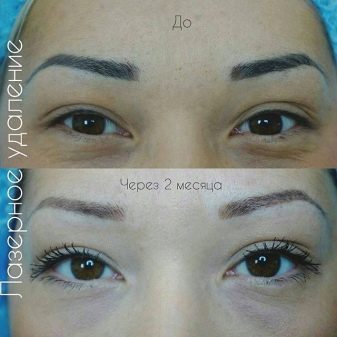
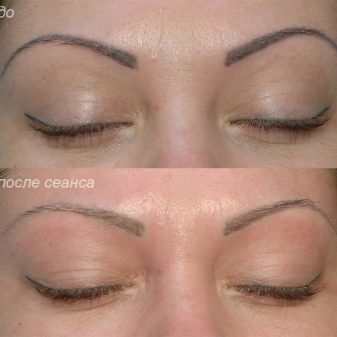
For a review of laser eyebrow tattoo removal, see the next video.
